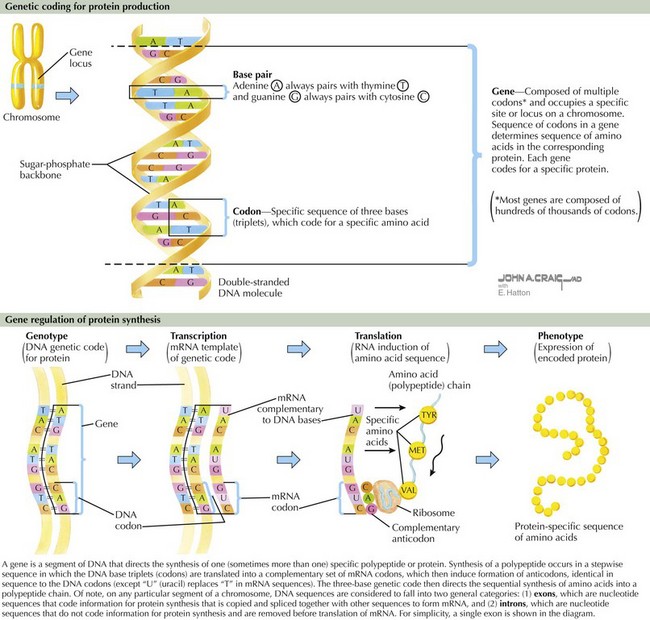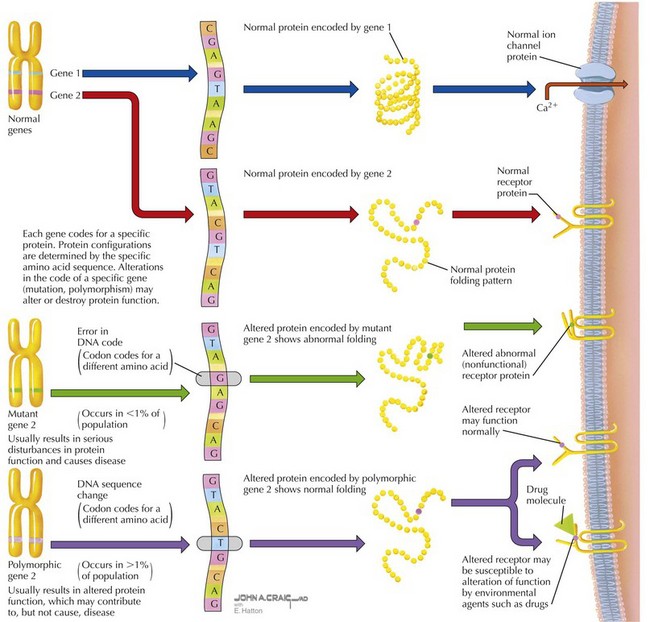72 Genetics in Cardiovascular Disease
This chapter on genetics is not comprehensive. Many excellent texts describe all aspects of genetics, from the genetic basis of disease to gene therapy. Instead, the goal of this chapter is to introduce the clinically important principles of genetics and the application of these principles to clinical medicine, with particular emphasis on the genetics of cardiovascular diseases (Fig. 72-1). A brief glossary of the clinically important terms in this chapter is shown in Box 72-1.
Box 72-1 Terminology
Modern Human Genetics in the Etiology of Disease
With the advent of high-speed DNA sequencing, it has become clear that the genetic basis of human disease is much more complex than was formerly recognized. There are several reasons for this greater complexity. First, mutations in specific genes are rarely unique; the same phenotype can result from any of a number of mutations in the same gene. Second, nearly identical phenotypes can result from a mutation in more than one gene. Third, just as genes do not act in isolation, mutations often do not have a strict cause-and-effect relationship with disease (Fig. 72-2). Often an interaction of a mutation with a broad array of environmental factors leads to a given phenotype. Finally, humans are not a product of changes in single genes in isolation but of many, perhaps hundreds, of polymorphisms (Fig. 72-3, upper). Commonly, susceptibility to environmental effects depends not on a single gene but on the interactions of many genes—often genes for nuclear factors that regulate the expression of entire classes of genes. Practical examples are discussed in the following section.
Stay updated, free articles. Join our Telegram channel

Full access? Get Clinical Tree




